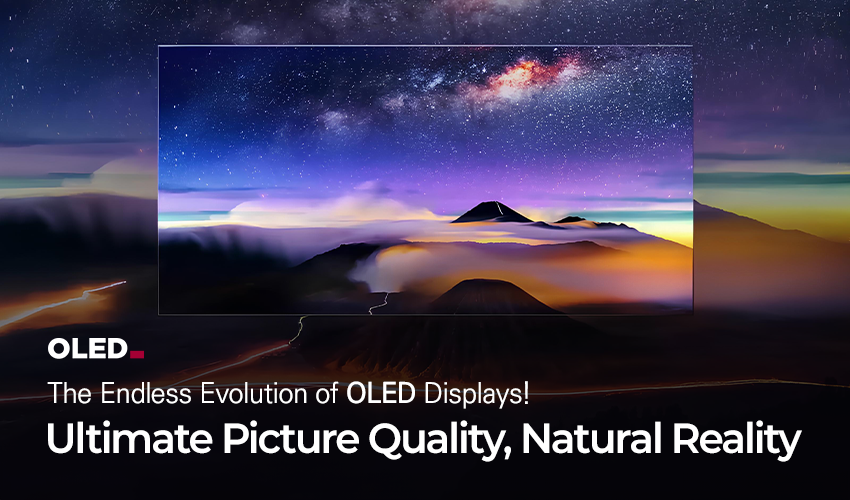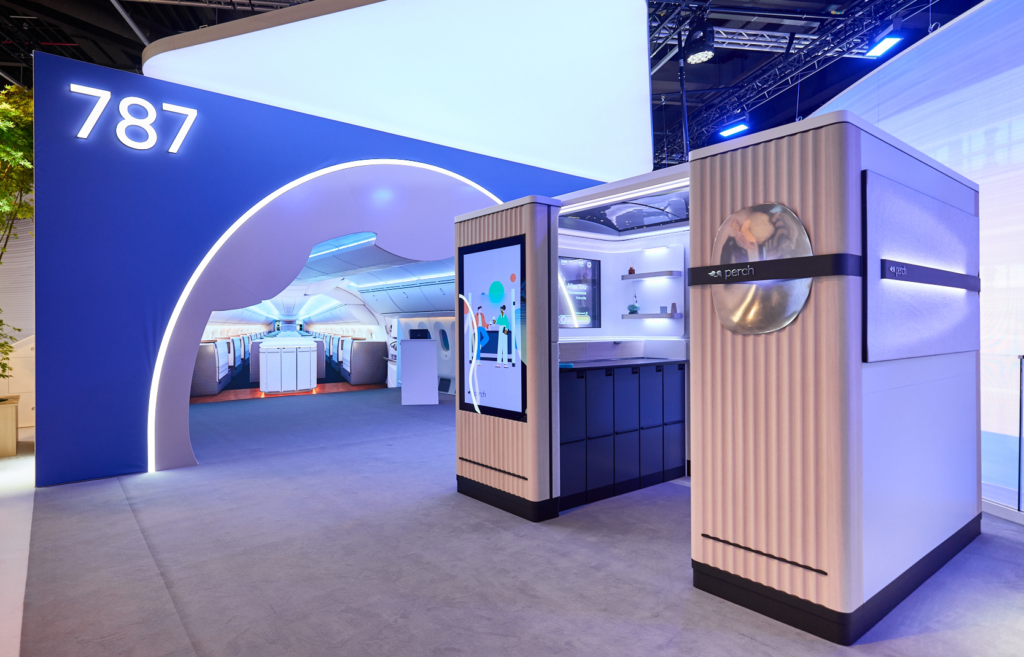
When heading overseas on a long flight, it’s essential that passengers have access to aircraft displays that provide varied flight information and entertainment. What if OLED panels of the appropriate size and form factor were applied to various spaces such as the back of seats, partitions between cabins, and even the ceiling?
This question has been answered at the Aircraft Interiors Expo (AIX) 2024 in Hamburg, Germany. With over 13,000 participants from over 400 companies, including airlines and aircraft parts manufacturers, AIX is the world’s latest aircraft interior and in-flight entertainment exhibition.
LG Display has collaborated with Boeing, the world’s largest aircraft manufacturer, and LIG Nex1, Korea’s leading defense company, to showcase OLED products and solutions that promise to take passengers’ in-flight experience to the next level.
Let’s take a look at the OLED for aircraft technology that will accompany our flights in the near future.
Optimized displays for aircraft, LG Display OLEDs
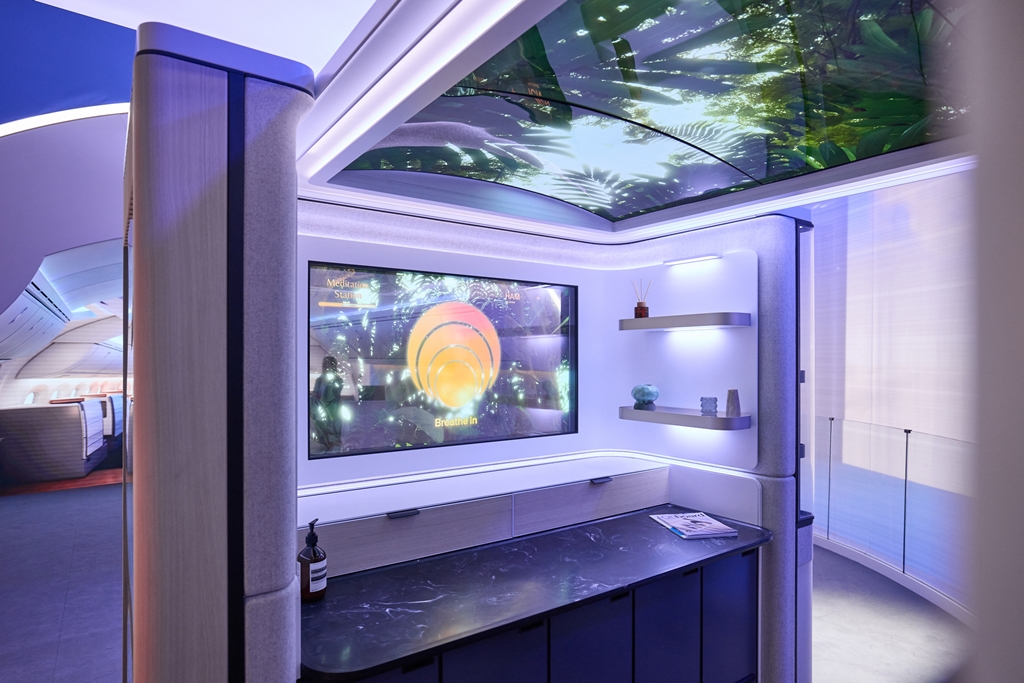
LG Display has been researching OLED panels for aircraft based on its OLED technology accumulated over the past decade. After close cooperation with Boeing EnCore Interiors, a Boeing subsidiary, it has succeeded in developing an OLED solution for aircraft.
OLED panels do not need a backlight unit, which allows them to be lighter than LCDs and thereby more cost-effective for flying, as well as offering flexibility in various spaces through thin, curved, or transparent applications.
Also, because each pixel emits light on its own, OLED panels deliver perfect black and excellent color reproduction, enabling a clearer viewing experience even in dark environments such as the interior of an aircraft. As emissions of potentially blue light that can disturb sleep are half the level of LCDs, and there is no headache-inducing flicker, OLED panels are also optimal for aircraft passengers who may be on board for relatively long durations.
So, how about we go through that exhibition?
Aircraft OLED for a comfortable new on-board experience
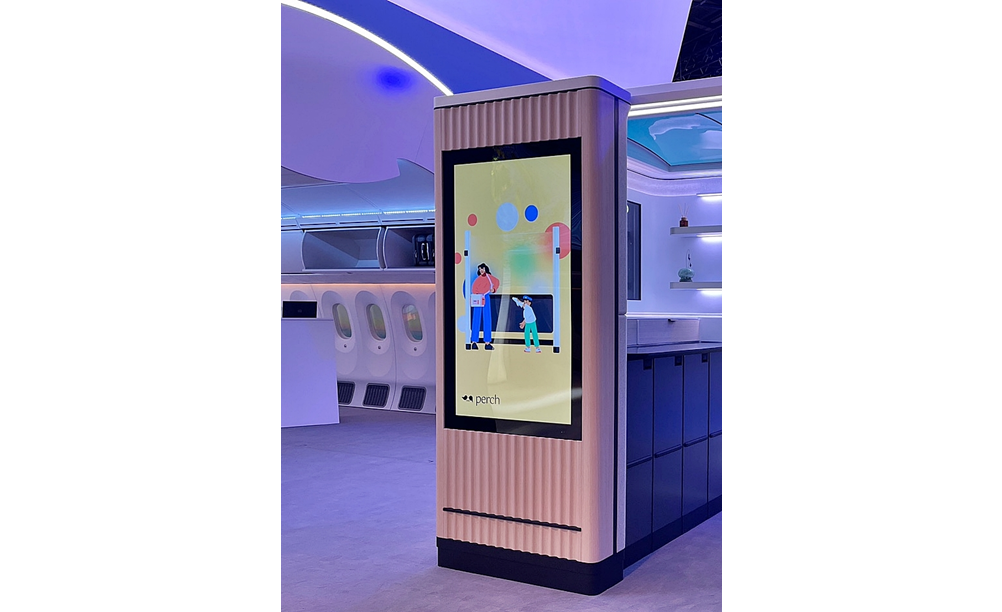
First, we find a welcome screen made up of a 55-inch OLED panel at the entrance of the aircraft. When passengers board, they can see information ranging from flight details to seating arrangements with a welcome greeting on a large and clear display.
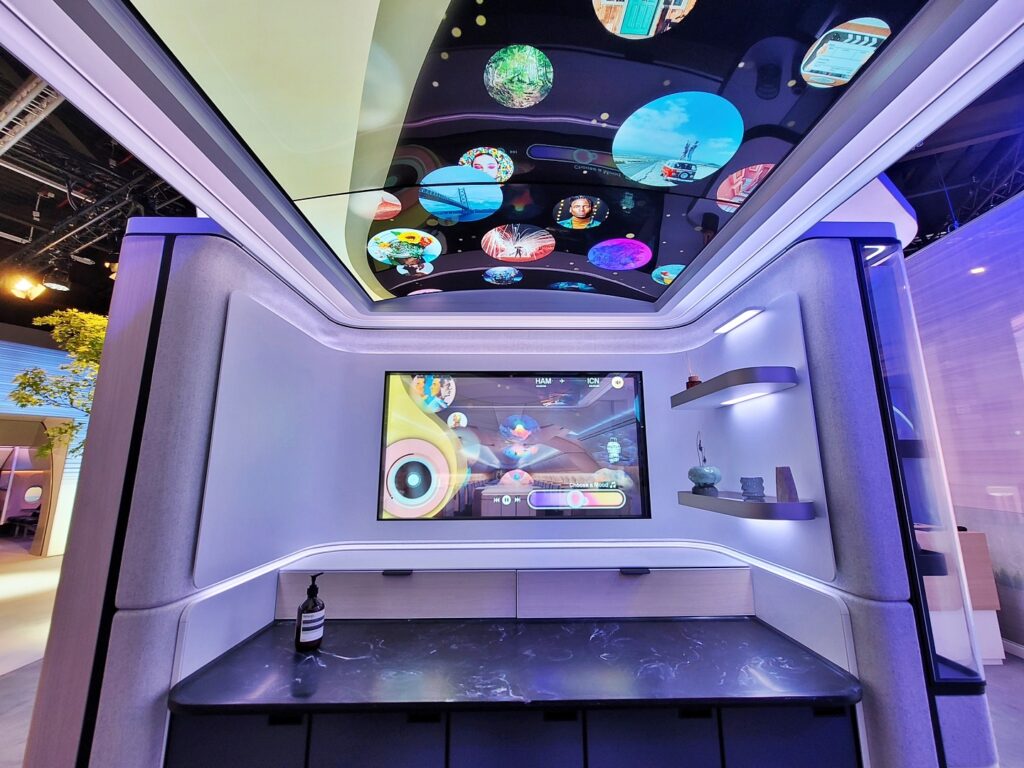
On the ceiling of the aircraft’s cabin, we see curved OLED panels installed in the shape of arches, matching the curves of the aircraft itself. They display images reflecting the time of day and weather, such as a night sky, raindrops, or even an aurora. In addition to providing passengers with visual delights and a new in-flight experience, these panels can also show flight information, airline branding videos, and duty-free shopping details as needed according to the situation.
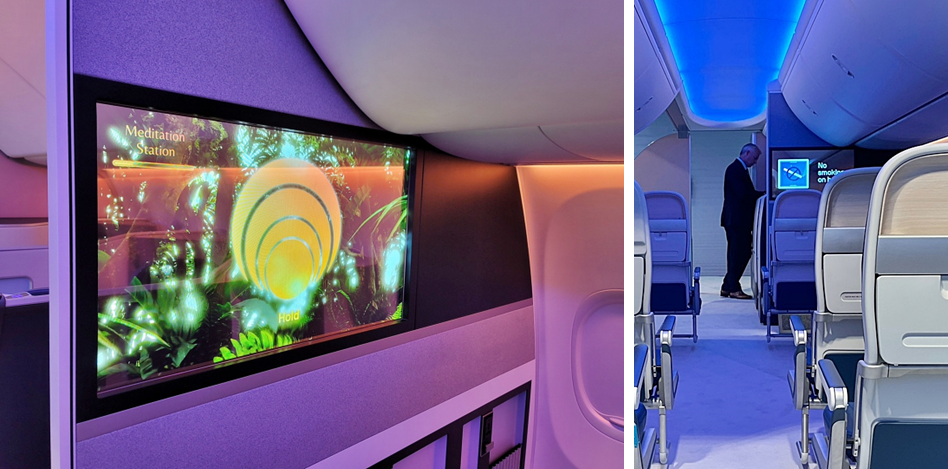
Transparent OLEDs serve as partitions within the aircraft’s cabin, ensuring a feeling of openness by offering glasslike transparency while also being able to show notifications such as messages from the captain and weather conditions as needed.
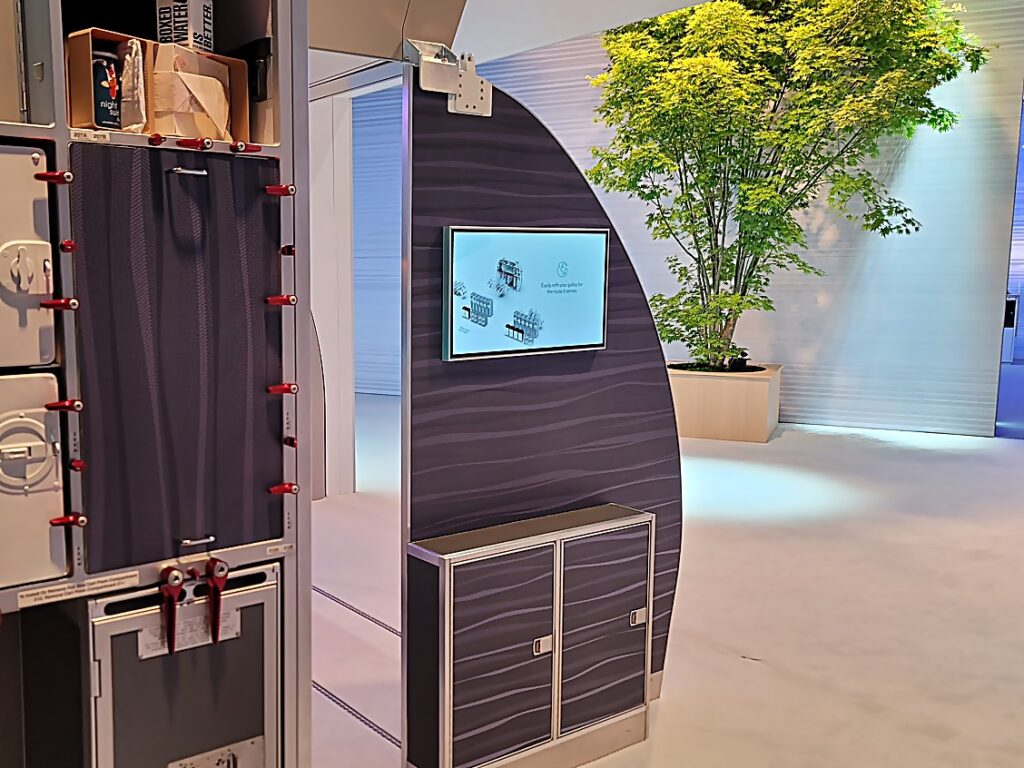
A 27-inch OLED monitor is additionally installed in the galley, that space in the aircraft where flight attendants prepare in-flight meals and other items for service. The panel can support their work, including inventory management.
Takeoff Time for Aircraft OLED

It is clear that OLEDs, which are light and offer a high degree of design freedom, are emerging as the optimal kind of display for aircraft. They perfectly harmonize with the cabin structure and present a solution to aircraft manufacturers seeking to distinguish their in-flight experience and passenger services.
In addition, with Boeing and LIG Nex1, LG Display plans to continue technology development and testing to apply OLED technology to aircraft, and the test aircraft EcoDemonstrator will begin ground and flight tests within this year.
Watch this space as LG Display’s pursuit of innovation in pioneering high value-added new markets through preemptive technological development places the company in a position to soar in the field of air mobility!



